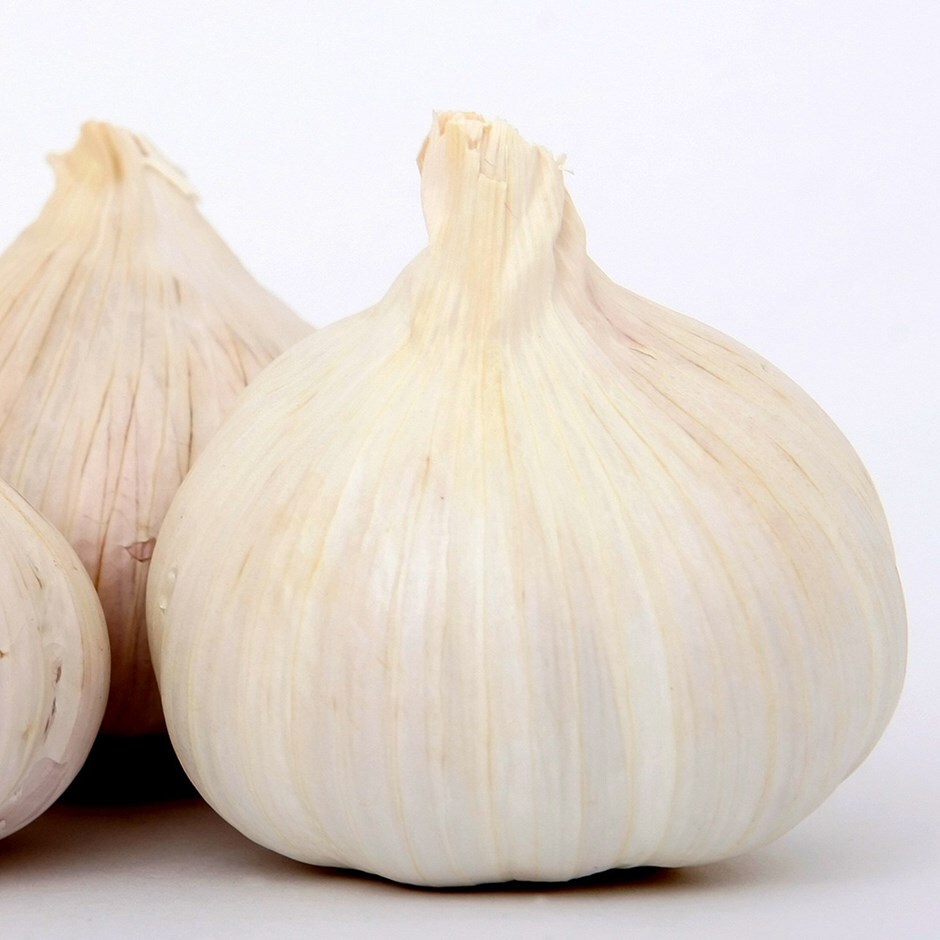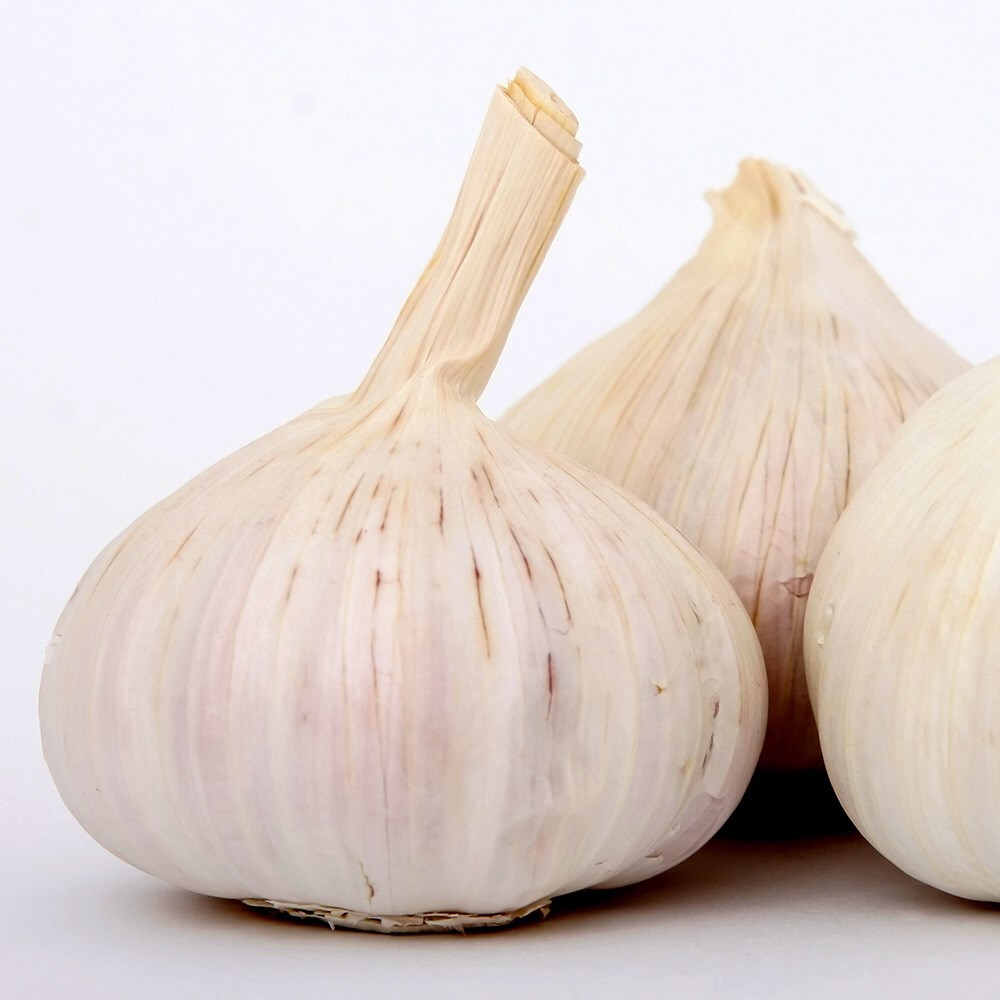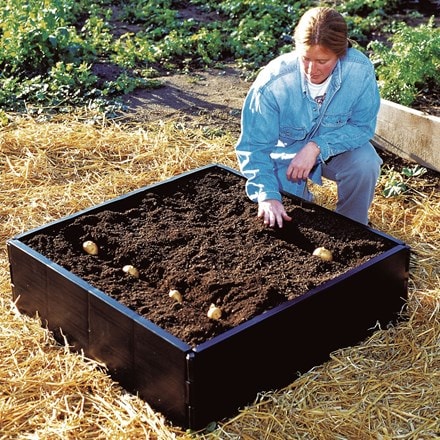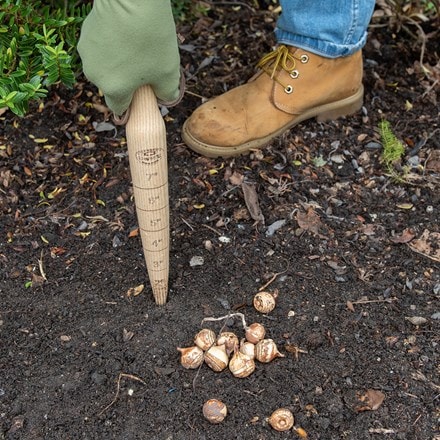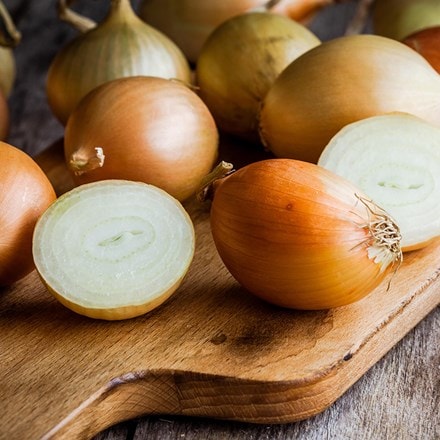Eventual height & spread
French garlic 'Cristo'
garlic (French softneck) bulb - Allium sativum Cristo
- 1 × head/bulb
- £4.99
- Delivered by early February
- 2 + 1 FREE heads/bulbs
- £9.98 £3.33 each
- Delivered by early February
Delivery options
- Bulbs (only) £4.99
- Position: full sun
- Soil: well-drained neutral to alkaline soil
- Rate of growth: average
- Hardiness: fully hardy
A continental, cultivated variety which produces plump, white-skinned cloves that have a delicious, strong flavour and a light aroma. French garlic 'Cristo' can be planted in autumn or spring for harvesting the bumper crops in summer.
Not just useful for adding flavour to food, garlic is also well known as a companion plant as it acts as a powerful insect repellent. Try dotting it around your more precious plants and marvel at the results!
Please note that each head (bulb) that can be split up into several cloves before planting. You will usually get about 9-16 cloves from this cultivated variety of garlic when split up for planting.
Not just useful for adding flavour to food, garlic is also well known as a companion plant as it acts as a powerful insect repellent. Try dotting it around your more precious plants and marvel at the results!
Please note that each head (bulb) that can be split up into several cloves before planting. You will usually get about 9-16 cloves from this cultivated variety of garlic when split up for planting.
Garden care:
Softneck garlic is typically easier to grow in milder areas and stores much longer than hardneck types, often well into the following spring or longer if dried and stored properly.
Plant individual cloves in autumn or early spring, spacing them 15-20cm (6-8in) apart in rows around 30cm (12in) apart, in a sunny spot with free-draining soil. Avoid heavy or waterlogged ground and don’t plant into freshly manured beds. Set cloves just below the surface, with the tip just visible or 2.5cm (1in) deep.
Water during prolonged dry spells, especially from late spring when bulbs are swelling, and keep the area weed-free. Unlike hardnecks, softnecks don’t scapes, and typically form more cloves per bulb.
Harvest from mid-June to July once the foliage begins to yellow and flop, lifting gently and allowing bulbs to dry thoroughly in a well-ventilated, shaded area. Lay the bulbs (with stems and roots still attached) somewhere dry, airy, and out of direct sunlight for 2-3 weeks. A shed, greenhouse with the vents open, or a covered porch all work well. Once 'cured', they can be plaited or stored in mesh bags in a cool, dry place.
Plant individual cloves in autumn or early spring, spacing them 15-20cm (6-8in) apart in rows around 30cm (12in) apart, in a sunny spot with free-draining soil. Avoid heavy or waterlogged ground and don’t plant into freshly manured beds. Set cloves just below the surface, with the tip just visible or 2.5cm (1in) deep.
Water during prolonged dry spells, especially from late spring when bulbs are swelling, and keep the area weed-free. Unlike hardnecks, softnecks don’t scapes, and typically form more cloves per bulb.
Harvest from mid-June to July once the foliage begins to yellow and flop, lifting gently and allowing bulbs to dry thoroughly in a well-ventilated, shaded area. Lay the bulbs (with stems and roots still attached) somewhere dry, airy, and out of direct sunlight for 2-3 weeks. A shed, greenhouse with the vents open, or a covered porch all work well. Once 'cured', they can be plaited or stored in mesh bags in a cool, dry place.
- Pets: TOXIC if eaten; Humans: Skin irritant/allergen
